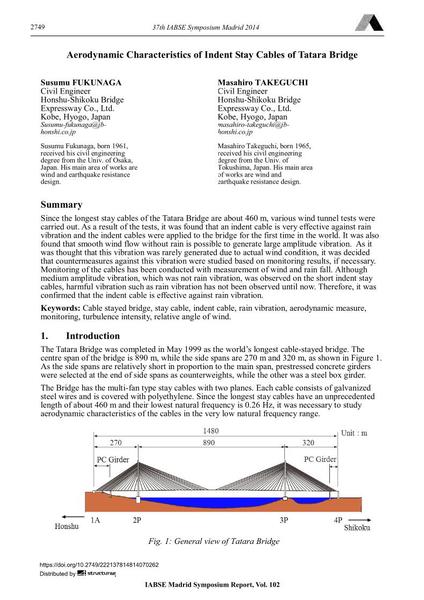Aerodynamic Characteristics of Indent Stay Cables of Tatara Bridge

|
|
|||||||||||
Détails bibliographiques
| Auteur(s): |
Susumu Fukunaga
Masahiro Takeguchi |
||||
|---|---|---|---|---|---|
| Médium: | papier de conférence | ||||
| Langue(s): | anglais | ||||
| Conférence: | IABSE Symposium: Engineering for Progress, Nature and People, Madrid, Spain, 3-5 September 2014 | ||||
| Publié dans: | IABSE Symposium Madrid 2014 | ||||
|
|||||
| Page(s): | 2749-2756 | ||||
| Nombre total de pages (du PDF): | 8 | ||||
| Année: | 2014 | ||||
| DOI: | 10.2749/222137814814070262 | ||||
| Abstrait: |
Since the longest stay cables of the Tatara Bridge are about 460 m, various wind tunnel tests were carried out. As a result of the tests, it was found that an indent cable is very effective against rain vibration and the indent cables were applied to the bridge for the first time in the world. It was also found that smooth wind flow without rain is possible to generate large amplitude vibration. As it was thought that this vibration was rarely generated due to actual wind condition, it was decided that countermeasures against this vibration were studied based on monitoring results, if necessary. Monitoring of the cables has been conducted with measurement of wind and rain fall. Although medium amplitude vibration, which was not rain vibration, was observed on the short indent stay cables, harmful vibration such as rain vibration has not been observed until now. Therefore, it was confirmed that the indent cable is effective against rain vibration. |
||||
